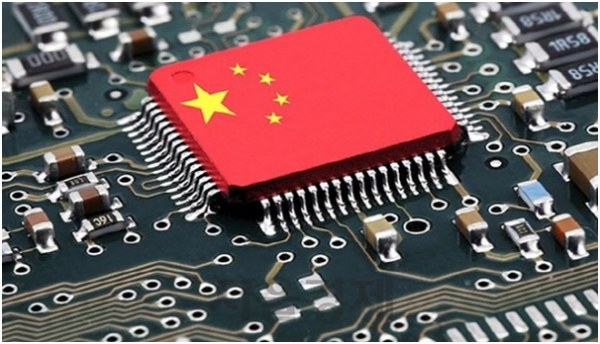Samsung, SK Hynix Respond by Increasing Investment

The Chinese government declared in 2015 that China would achieve self-sufficiency in the semiconductor industry within 10 years. China’s investment to this end amounts to one trillion yuan and its endeavor is going on.
Samsung Electronics and SK Hynix are concerned over a decrease in their market share and sales to result from China’s move. Besides the Chinese government’s aggressive support, Chinese semiconductor companies are stealing patents and personnel to add to their concerns.
YMTC recently unveiled a sample of its 128-layer NAND flash memory X2-6070. The Chinese company succeeded in manufacturing 64-layer products last year and is expected to start manufacturing the 128-layer product late this year. Samsung Electronics and SK Hynix produced their first 128-layer NAND flash memory products last year, and the technological gap between the South Korean and Chinese companies is likely to become less than two years once YMTC produces its 128-layer product as scheduled.
Tsinghua Unigroup is expanding its business to cover mobile application processors. The company acquired Spreadtrum and RDA Microelectronics in 2013 to enhance its system chip design capabilities. Unisoc, Tsinghua Unigroup’s fabless subsidiary, is planning to produce 6-nm 5G modems and application processors via TSMC.
Unisoc is not a well-known company in the application processor industry. Its 6-nm application processor design is likely to be based on support from the Chinese government in that only a handful of companies, such as Qualcomm, Samsung Electronics, Apple and Huawei, are currently capable of handling it. It is also said that HiSilicon, Huawei’s subsidiary whose application processor market share cannot be raised due to U.S. restrictions, is sharing its application processor design capabilities with Unisoc.
It was said that YMTC, which is in charge of Tsinghua Unigroup’s NAND flash memory business, would have a hard time developing its technology as its headquarters and manufacturing facilities are located in Wuhan, where COVID-19 originated. However, YMTC ran its facilities as usual during the shutdown of Wuhan that continued for months. This would have been impossible without assistance from the Chinese government.
Samsung Electronics and SK Hynix accounted for 35.5 percent and 9.6 percent of the global NAND flash market in the fourth quarter of 2019, respectively. During the period, China accounted for almost half of the global semiconductor demand. Last year, the South Korean companies’ sales in China totaled 38,040.5 billion won and 12,570.2 billion won, respectively. The ratio of SK Hynix’s sales in China to its total sales amounted to 46 percent. In the global NAND flash market, the Chinese companies including YMTC are likely to make an aggressive effort to catch up with the South Korean companies in that the market’s entry barriers are relatively lower than those of the DRAM market. Besides, Micron Technology is about to manufacture 128-layer 3D NAND flash products and Intel is expected to manufacture the first 144-layer NAND flash products in the industry within this year.
Samsung Electronics is responding to the challenges by increasing its investment. For example, it has invested US$7 billion in its second plant in Xi’an, China since 2017 and an investment of US$8 billion is scheduled to be added. The monthly NAND flash output of the plant, which is producing 3D vertical NAND flash chips with 90 or more layers, will reach at least 130,000 units once the investment is completed. SK Hynix is also planning to keep Chinese companies at bay by investing more. The company’s average annual investment in the industry topped 13 trillion won for the past three years.
In fact, the Chinese government’s one trillion yuan investment is not enough to overtake Samsung Electronics and SK Hynix. From 2017 to 2019, the South Korean companies invested 7.3 trillion won and 4 trillion won in the industry, respectively. Meanwhile, the Chinese government’s investment, approximately 17 trillion won, is a sum for 10 years. In other words, Chinese semiconductor companies need more financial resources.
This is why experts point out that Chinese companies will adopt a fast follower strategy based on patent and personnel stealing, tax incentives, and so on and the Chinese government will continue to support the companies until they achieve an economy of scale with, for example, Chinese PC manufacturers using those companies’ DRAM and NAND flash chips in spite of their low precision.


